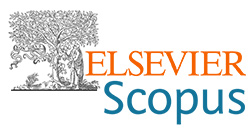Electrical properties of 1-Butyl-1-methylpyrrolidinum Hexafluorophosphate Ionic Liquid doped Polymer Electrolyte
DOI:
https://doi.org/10.62638/ZasMat1484Apstrakt
This paper reports the recent developments in electrolyte containing Ionic liquids with PVDF-HFP based electrolytes for Supercapacitor applications. The electrolyte was examined using various tools. The impedance analysis shows the ionic conductivity which was found 7.7 × 10-3 S/cm. Linear sweep voltammetry was employed to determine the electrochemical stability window that is 3.91V. The ionic transference number was measured and found 97% contribution of ions indicating minimal electronic contribution to the total conductivity. POM shows a reduction in crystallinity with increasing ionic liquid content. Maximum conducting polymer electrolyte film was sandwiched between between electrodes to fabricate EDLC. EDLC delivers a specific capacitance 87.6 F/g.
Ključne reči:
Polymer, Polymer electrolyte, Ionic liquid, Ionic conductivity, Supercapacitor, SDG-7Reference
N. Farah et al.(2019) “Solid polymer electrolytes based on poly(vinyl alcohol) incorporated with sodium salt and ionic liquid for electrical double layer capacitor,” Mater. Sci. Eng. B, 251,114468, https://doi.org/10.1016/j.mseb.2019.114468
M. Y. Chong, A. Numan, C. Liew, K. Ramesh, and S. Ramesh (2017) “Comparison of the performance of copper oxide and yttrium oxide nanoparticle based hydroxylethyl cellulose electrolytes for supercapacitors,” J. Appl. Polym. Sci., 134, (13), app.44636, https://doi.org/10.1002/app.44636.
K. Rajammal, D. Sivakumar, N. Duraisamy, K. Ramesh, and S. Rames (2016) “Enhanced electrochemical properties of ZnO-coated LiMnPO4 cathode materials for lithium ion batteries,” Ionics, 22(9), 1551–1556,
https://doi.org/10.1007/s11581-016-1685-2.
A. G. Pandolfo and A. F. Hollenkamp (2006) “Carbon properties and their role in supercapacitors,” J. Power Sources, 157(1),11–27, https://doi.org/10.1016/j.jpowsour.2006.02.065.
M. Hashemi, M. S. Rahmanifar, M. F. El-Kady, A. Noori, M. F. Mousavi, and R. B. Kaner (2018) “The use of an electrocatalytic redox electrolyte for pushing the energy density boundary of a flexible polyaniline electrode to a new limit,” Nano Energy, 44,489–498, https://doi.org/10.1016/j.nanoen.2017.11.058.
C.-W. Liew and S. Ramesh(2014) “Comparing Triflate and Hexafluorophosphate Anions of Ionic Liquids in Polymer Electrolytes for Supercapacitor Applications,” Materials, 7(5), 4019–4033, https://doi.org/10.3390/ma7054019.
A. Ray and B. Saruhan(2021) “Application of Ionic Liquids for Batteries and Supercapacitors,” Materials, 14(11), 2942, https://doi.org/10.3390/ma14112942.
S. Vali Mohammadi, F. E.Ghodsi, and J. Mazloom (2024) “Sol-gel combustion synthesis of porous Mg2SnO4@SnO2 nanocomposites: A study on the structural parameters, optical properties, and electrochemical activity,” Ceram. Int., 50(4), 6425–6440, https://doi.org/10.1016/j.ceramint.2023.11.382.
K. Xu (2004) “Nonaqueous Liquid Electrolytes for Lithium-Based Rechargeable Batteries,” Chem. Rev., 104(10) 4303–4418, https://doi.org/10.1021/cr030203g.
A. Ray and B. Saruha (2021) “Application of Ionic Liquids for Batteries and Supercapacitors,” Materials, 14(11), 2942, https://doi.org/10.3390/ma14112942.
B. Pal, S. Yang, S. Ramesh, V. Thangadurai, and R. Jose (2019) “Electrolyte selection for supercapacitive devices: a critical review,” Nanoscale Adv., 1(10), 3807–3835, https://doi.org/10.1039/C9NA00374F.
M. Karakoti et al. (2020) “Binder-free reduced graphene oxide as electrode material for efficient supercapacitor with aqueous and polymer electrolytes,” High Perform. Polym., 32(2) 175–182, Mar. 2020, https://doi.org/10.1177/0954008320905659.
S. Kumar et al.(2023) “In-situ N/O-heteroatom enriched micro-/mesoporous activated carbon derived from natural waste honeycomb and paper wasp hive and its application in quasi-solid-state supercapacitor,” J. Energy Storage, 72, 108722, https://doi.org/10.1016/j.est.2023.108722.
A. Eftekhari (2017) “Supercapacitors utilising ionic liquids,” Energy Storage Mater., 9, 47–69, https://doi.org/10.1016/j.ensm.2017.06.009.
B. Bhattacharya, R. K. Nagarale, and P. K. Singh(2010) “Effect of Sodium-mixed Anion Doping in PEO-based Polymer Electrolytes,” High Perform. Polym., 22(4), 498–512 https://doi.org/10.1177/0954008309104931.
R. Singh, P. K. Singh, V. Singh, and B. Bhattacharya(2019) “Quantitative analysis of ion transport mechanism in biopolymer electrolyte,” Opt. Laser Technol., 113, 303–309, https://doi.org/10.1016/j.optlastec.2018.12.036.
A. Gupta, A. Jain, and S. K. Tripathi(2021) “Structural, electrical and electrochemical studies of ionic liquid-based polymer gel electrolyte using magnesium salt for supercapacitor application,” J. Polym. Res., 28(7), 235, https://doi.org/10.1007/s10965-021-02597-9.
J.-Y. Tilquin, R. Côté, G. Veilleux, D. Guay, J. P. Dodelet, and G. Denès (1995) “Preparation and chemical reduction of Pt(IV) chloride-GICS: Supported Pt vs Pt inclusion graphite compounds,” Carbon, 33(9), 1265–1278, https://doi.org/10.1016/0008-6223(95)00073-M.
Y. Bajaj, F. A. Latif, M. N. Masri, M. Z. A. Yahya, and P. K. Singh (2024) “Low Viscosity Ionic Liquids as Novel Dopants in Poly (MethylMethacrylate) Polymer Electrolyte: Detailed Photoelectrochemical Studies,” Recent Innov. Chem. Eng. Former. Recent Pat. Chem. Eng., 17(1), 3–25, https://doi.org/10.2174/2405520416666230809152422.
S. Shenbagavalli, M. Muthuvinayagam, S. Jayanthi, and M. S. Revathy (2021) “Investigations on Al2O3 dispersed PEO/PVP based Na+ ion conducting blend polymer electrolytes,” J. Mater. Sci. Mater. Electron., 32(8), 9998–10007, https://doi.org/10.1007/s10854-021-05658-3.
C.-W. Liew, S. Ramesh, and A. K. Arof (2016) “Enhanced capacitance of EDLCs (electrical double layer capacitors) based on ionic liquid-added polymer electrolytes,” Energy, 109, 546–556, https://doi.org/10.1016/j.energy.2016.05.019.
C.-W. Liew, S. Ramesh, and A. K. Arof, (2016) “Enhanced capacitance of EDLCs (electrical double layer capacitors) based on ionic liquid-added polymer electrolytes,” Energy, 109, 546–556, https://doi.org/10.1016/j.energy.2016.05.019.
J. P. Tafur and A. J. Fernández Romero, (2014) “Electrical and spectroscopic characterization of PVdF-HFP and TFSI—ionic liquids-based gel polymer electrolyte membranes. Influence of ZnTf2 salt,” J. Membr. Sci., 469, 499–506 https://doi.org/10.1016/j.memsci.2014.07.007.
M. Mokhtar, E. H. Majlan, A. Ahmad, S. M. Tasirin, and W. R. W. Daud (2018) “Effect of ZnO Filler on PVA-Alkaline Solid Polymer Electrolyte for Aluminum-Air Battery Applications,” J. Electrochem. Soc., 165(11), A2483–A2492, https://doi.org/10.1149/2.0381811jes.
S. Konwar et al. (2025) “Ionic liquid (1-Ethyl-3-methylimidazolium tricyanomethanide) incorporated corn starch polymer electrolyte for solar cell and supercapacitor application,” Chem. Phys. Impact, 10, 100780, https://doi.org/10.1016/j.chphi.2024.100780.
S. Rawat et al., (2024) “Ionic liquid (1-butyl-1-methylpyrrolidinium trifluoromethanesulfonate) doped polyethylene polymer electrolyte for energy devices,” J. Mater. Sci. Mater. Electron., 35 (24), 1643, https://doi.org/10.1007/s10854-024-13397-4.
C.-C. Yang et al. (2018) “Flexible solid-like electrolytes with ultrahigh conductivity and their applications in all-solid-state supercapacitors,” RSC Adv., 8(53), 30239–30247, https://doi.org/10.1039/C8RA04674C.
A. Manfo T, S. Konwar, P. K. Singh, R. M. Mehra, Y. Kumar, and M. Gupta (2021) “PEO + NaSCN and ionic liquid based polymer electrolyte for supercapacitor,” Mater. Today Proc., 34, 802–812, https://doi.org/10.1016/j.matpr.2020.05.340.
K. B. M. Isa, L. Othman, D. Hambali, and Z. Osman (2017) “Electrical and electrochemical studies on sodium ion-based gel polymer electrolytes,” presented at the international conference “functional analysis in interdisciplinary applications” (FAIA2017), Astana, Kazakhstan, 040001. https://doi.org/10.1063/1.4999867







